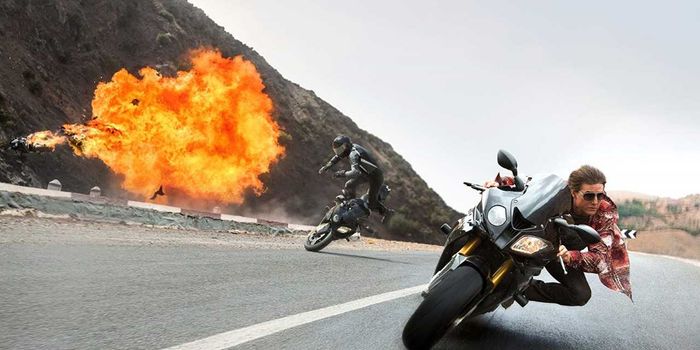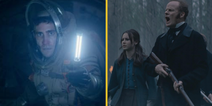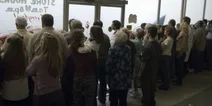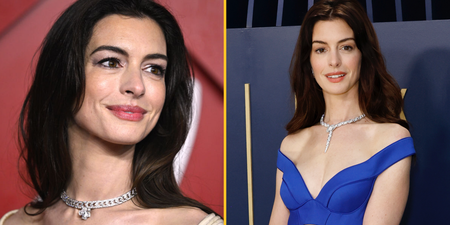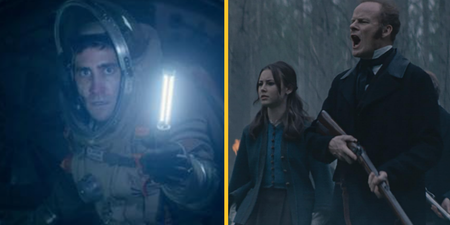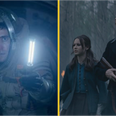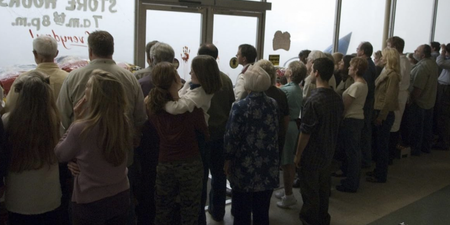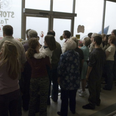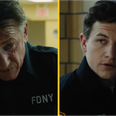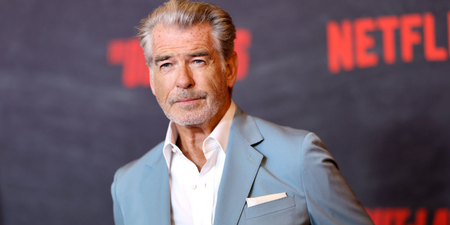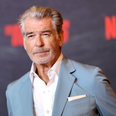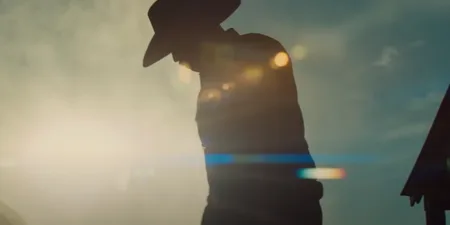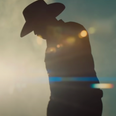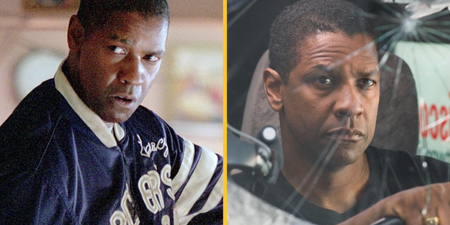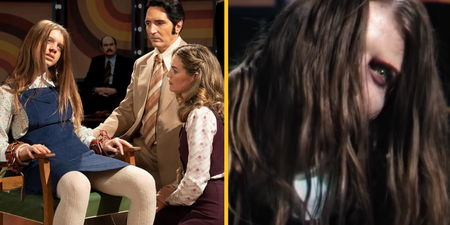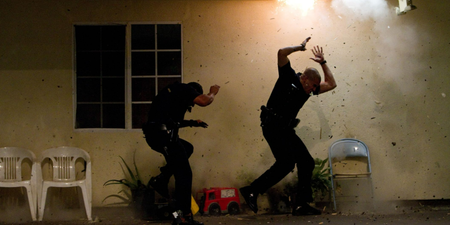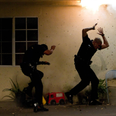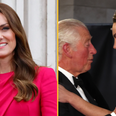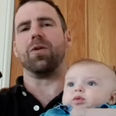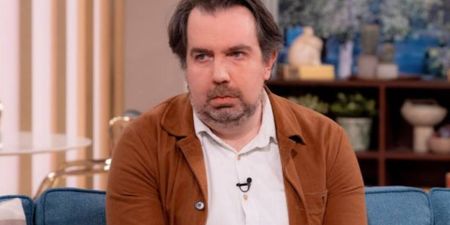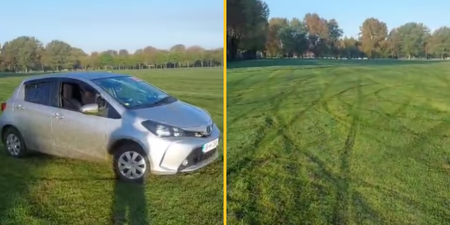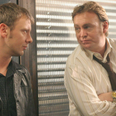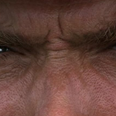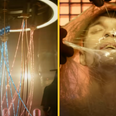Close your eyes and imagine you’re Tom Cruise in 2015.
For the sake of your job, you’ve just tied yourself to the outside of a plane taking off, a stunt that will pin down the marketing for your new movie as it takes centre stage in the trailer, the poster and everyone’s conversation about the film.
You know already there is going to be a sequel, and sequels must always be bigger and better. You must always be bigger and better. And yet, we’re left with one nagging question and it isn’t ‘Where do you go from here?’ The question, and it is one nobody can avoid when considering the career of Tom Cruise, is ‘ Why are we here in the first place?’
In a world of CGI and well-trained stunt-men, why in 2015 is a 53-year-old Hollywood A-lister tied to the outside of a plane taking off at all?
Jump forward to 2018, and Mission: Impossible – Fallout is hitting the big screen. From the looks of it, there is no big stunt that the movie is being pinned on and that seems to be because every single set-piece in this movie is on par with that plane stunt. Every stunt is a big stunt, every stunt seems to proclaim that this 56-year-old man cannot be bowed, cannot be dimmed by time or age or the elements that attack us all. With Tom Cruise, we know where we go from here, but still we cannot escape the other question, Why? Why are we here in the first place?
No other actor puts themselves into the path of so much potential danger as Cruise, so there is always a giddy thrill of watching these films knowing that this is really him setting up a tent in harm’s way.
It wasn’t always like that, though. Think back to 1996, and the whole movie is sold on the image of Tom hanging from a wire in an entirely silent room…
In 1995, GoldenEye has just been released to huge success, and spy franchises were hot again. Over the next few years, old spy shows would get the big screen treatment, with The Saint, The Avengers (not that one, the terrible Ralph Fiennes/Uma Thurman one), and Charlie’s Angels hitting cinemas, and the genre becoming so popular that we get a hugely successful parody series out of it, with the first Austin Powers movie arriving in 1997.
Meanwhile, Cruise has being trying harder and harder to be taken seriously as an actor, with the likes of Born Of The Fourth Of July, A Few Good Men and Interview With A Vampire replacing the blockbusters of Top Gun and Days Of Thunder, and he was clearly looking to get back into something a bit more… fun.
Paramount Pictures had owned the rights to the Mission: Impossible series for a number of years and had yet to find a way to make it a viable project. Cruise had just set up his new production company with producing partner Paula Wagner, and they both decided that Mission: Impossible should be their first project.
They worked on the plot with filmmaker Sydney Pollack (Three Days Of The Condor, Out Of Africa), before hiring some of the most sought-after screenwriters in Hollywood at the time to finalise the screenplay, including David Koepp (Jurassic Park, Death Becomes Her), Steve Zaillian (Schindler’s List, Gangs Of New York), and Robert Towne (Chinatown, Marathon Man).
The left field choice of Brian DePalma (The Untouchables, Carrie) makes a lot more sense in hindsight, as while the international espionage of the movie is definitely more low-key than what the franchise would eventually morph into, his skill set perfectly matched the constantly rug-pulling script… one that killed 80% of the main cast within the first 10 minutes.
Looking back now, it is almost hilarious just how small in scale it seems compared to the behemoth the later entries represented, not unlike comparing From Russia With Love to Skyfall, but the difference remains that unlike Connery, or Craig, we know that Cruise is doing all of this for real and that it is not a series of actors changing with the franchise but one man – Cruise – who is taking the film from its relatively humble beginnings to these relentless heights.
And it all kicked off with that infamous Langley break-in scene, and the image of Ethan Hunt hanging from the ceiling, trying to stay as flat as possible in mid-air.
“With all films, audiences have become more aware and more critical,” Wade Eastwood, stunt coordinator for the fifth and sixth Mission: Impossible films says, well aware of how far the series has progressed.
“They need more visual stimulation, so with the real action movies like the Missions and Bournes and Bonds, we’ve really had to challenge ourselves to create bigger action sequences and most stimulating visuals. The first Mission, in its time, I’m sure was quite complex and hectic from an action point of view, but if you look back at it now, the action in Mission One is probably the first ten pages of the action in Mission Six.”
“Today, the audiences would want sharks coming out of that fish-tank and then chasing him down the street. But with the Missions, they’ve always stuck to story, and never doing action for action’s sake. Ethan’s character doesn’t want to fight, but sometimes he doesn’t really have a choice. He has to make these last-minute decisions, and he doesn’t want to fail, and he just doesn’t always have a plan.”
The $80 million production went on to make $457 million at the box office, making it third biggest film of 1996, behind only Independence Day and Twister. Critics were generally kind, and it set out the stall for what the rest of the franchise would follow: Cruise and a tombola of semi-famous crew members would be disavowed by the government, and they’d have to prove their innocence and take out the bad guy and return everything to the status quo.
Four years later, we got Mission: Impossible 2, which kick-started the franchise’s penchant for giving each outing to a different director. This time it went to John Woo, who was hot off the success of Face/Off, and the supporting cast was filled out with the likes of Anthony Hopkins, Thandie Newton, Brendan Gleeson, and Dougray Scott (who passed up on the role of Wolverine for this instead).
It was a huge financial success, with the $125 million production making $546 million at the box office, making it the biggest movie of the year by over $100 million. But, in a world of billion-dollar-making Transformers and Pirates Of The Caribbean sequels, we know too well that financial success and quality movie-making aren’t necessarily mutually exclusive.
Robert Towne returned for writing duties but he is reported to have said that the set-pieces were already in place before he was brought on board to work out the plot, which is something that will come up again in the series. That is very much evident from watching the finished product, and despite the fact that it has the exact same Metacritic score as the original (59%), time has not been kind to the first sequel, and it constantly ends up last on the M:I league.
Which is why we’re going to skip over it entirely.
It would be six years before Cruise would return to the role of Ethan Hunt, and he was apparently so very close to never returning. Apparently, executives were none-too-happy with Cruise’s personal life getting more headlines than his movies, and they offered the directing gig to David Fincher, who was reportedly planning on the new Ethan Hunt to be played by his Se7en and Fight Club star, Brad Pitt.
Fincher eventually dropped out, and Cruise was signed back on, and it was then that he brought in a young whippersnapper by the name of J.J. Abrams, who would make his feature debut here, as well as the franchise’s best villain to date, played by Philip Seymour Hoffman.
His insidious nastiness oozes out of every scene, as does the kinetic, revitalised nature of the action. In a film filled with some incredible set-pieces – the opening Germany shoot-out, which blends into a helicopter chase, or The Vatican break-in, or the Shanghai skyscraper base-jump – the stand-out remains that bridge attack, with one moment in particular embedded in every viewer’s mind.
“That is Tom. It is all Tom,” Eastwood says. “So Tom’s running forward, he’s on what is called the Dead Man’s Cable, and then a ratchet sideways. So what you’re doing is you’re run with a cable attached to the back of you that stops you dead, and as soon as it stops you, that is then timed into a ratchet, which is a hydraulic ram that is pulled from another cable that is attached to a harness on your body, that then fires you sideways. So you get the perfect stop-and-sideways instead of a lazy arc. It is a good, hard, ground-pounding stunt, and for an actor like Tom Cruise to do it… I mean, you’ve gotta give him kudos.”
Mission: Impossible III was the turning point for the series, and allowed Cruise and co. to really make a Bond ‘N’ Pals franchise with Mission: Impossible – Ghost Protocol in 2011, with set-pieces now only restricted by their imagination and, at a push, maybe gravity.
Despite costing a lot more ($150 million), it actually made significantly less than the previous two movies ($398 million), perhaps because audiences didn’t want to get burned again after M:I-2.
It was also his first big blockbuster release since he was watched by millions of people jumping up and down on Oprah’s couch to proclaim his love for Katie Holmes, which was right around the time that Cruise’s movies in general started to make less and less money. Valkyrie, Lions For Lambs, Knight & Day, Rock Of Ages, Jack Reacher, Oblivion… none broke $100 million in the States. Anyone who thinks that couch jump didn’t put a permanent dent in Cruise’s career can’t argue with the pure numbers of the situation.
Something needed to be done to distract from all that off-screen noise, and the best way to distract people is with the biggest distraction you can think of.
Literally. After all, why are we here in the first place?
Brad Bird, director of animation classics The Incredibles and Ratatouille, as well as being a major part of The Simpsons during its golden era (he is reported to have been the creator of Sideshow Bob) was hired to make his live-action debut with Mission: Impossible – Ghost Protocol. The script is credited to two of the writers of hit spy show Alias, while Christopher McQuarrie, writer on The Usual Suspects was also involved.
“On Ghost Protocol, I came in on the middle of the shoot to do a rewrite of the screenplay, though they had already started the movie,” McQuarrie would tell the Minnesota Star Tribune. “The script had these fantastic sequences in it but there was a mystery in it that was very complicated. What I did was about clarity. The mystery had to be made simpler. It’s like reaching into a sock and pulling it inside out. It’s still a sock, still all the same pieces, but all put together in a different order.”
McQuarrie would later come back to write and direct Rogue Nation, and then become the first director to helm more than one M:I film, as he also returns for Fallout.
However, one of those fantastic sequences that McQuarrie is talking about is the one that the film’s marketing campaign really pinned itself to: Tom Cruise climbing on the outside of the Burj Khalifa, the world’s tallest building. But there is so much more to it than that – not only does the sequence begin with that impossible climb, it then blurs into a series of fistfights, and then a foot-chase through a packed market, and then a car-chase in the middle of a gigantic sandstorm.
It is tough to think of any other action movie that kept one action sequence going so long, so relentlessly, and yet they pulled it all off almost effortlessly. Which is, of course, a testament that it was far from effortless to successfully pull off, and it was something that Tom remained a part of, every step of the way.
This was the exact point in the Mission: Impossible movies when the stunts seemed to almost be bigger than the movies they were in, as the story of Cruise actually climbing the world’s tallest building became headline news. But this must have been one of the easier stunts to “fake”, for lack of a better word, so why bother doing it at all? Is it just to say that he did it?
“Tom doesn’t do these stunts to gain recognition, he doesn’t do it for ego,” Eastwood says. “He does it if it fits the story, so if it truly fits the character, then he goes for it. We’ll always look at it and ask ‘Is it necessary for Ethan to do this?’ Before we ask is it necessary for Tom to do it. As long as it enhances the story, and it enhances the character, and it enhances the story-telling, then we push ahead with how to do it.”
So… if Tom doesn’t do this for the ego, what does he do it for?
From the outside in, it would appear that it is giving the audience something else to focus on.
Something else other than that couch. Something other than the Scientology and the three failed marriages. But even that might not get to the heart of it, the truth might not be that it is a distraction for the audiences, but a relentless abandonment for him. After all, why are we here?
For that, we might need to go further back. Cruise once referred to his abusive father as “a merchant of chaos”.
His family constantly moved around, and Cruise is said to have attended 15 different schools in 14 years, including a long stint in Canada, where they lived for several years so Cruise’s father could take a position as a defence consultant with the Canadian Armed Forces, but there was no sense of safety for Cruise in his own home, telling Parade: “He was the kind of person where, if something goes wrong, they kick you. It was a great lesson in my life—how he’d lull you in, make you feel safe and then, bang! For me, it was like, ‘There’s something wrong with this guy. Don’t trust him. Be careful around him.'”
Somewhere in there, off the back of seeing how damaging his private life could potentially be to his career, Cruise seems to have learned his lesson, and he has managed to refocus the conversation. We no longer know every nook and cranny of Tom Cruise: Action Star, and when was the last time we have seen any tabloid run a story about him? More often than not, the thing most of the media have to say about him now is “Do you know he does all his own stunts?”
That redirection obviously paid off, as Ghost Protocol went on to make $694 million – not only the biggest Mission: Impossible hit, but also the biggest hit in Cruise’s entire career. It was becoming apparent that they had cracked the code for success, as the spy franchise became less about spying and more about blowing the audience away with the not very discreet, not-very-spy-like action sequences, and so next came Mission: Impossible – Rogue Nation, released in July 2015.
McQuarrie was promoted from ghost (Protocol) script-doctor to fully fledged writer and director, having gelled so well with Cruise on the first Jack Reacher movie, and he too had a massive, attention-grabbing set-piece to hang the entire movie’s promotional campaign on: the aforementioned Ethan Hunt tied to the outside of an airplane as it takes off.
It dominated everyone’s attention leading up to the release, which is why it was so surprising that it was literally the first thing you see happen in the movie. Everything that followed didn’t reach the same scope but the whole project had so many more moving parts, all requiring such a level of intricacy, that it was almost impossible for a viewer to fathom without having it broken down for them piece by piece.
Take, for example, the car and–then-motorbike chase sequence which was many people’s favourite.
“Yeah, that is my favourite too,” Eastwood says. “Tom is a great rider, but drifting is a very different style of driving. And he can drive a motorbike and drive them fast, but I wanted to teach him how to drive consistently fast, in a sort of Motor GP bike, and in order to do that, I had to bring some friends of mine from World Superbike riders in to work with him very closely.”
On bikes, Eastwood points out, even more can go wrong.
“You’ve only got two points of contact on the ground, so I would groom those roads, I would sweep them, make sure there was no gravel on them, and do runs in front of him. And even though we had the set locked-up, we’d need to make sure there were no goats were they shouldn’t be, or a chicken or a donkey or a person, so we made the roads as safe as we could.”
Another massive hit ($682 million), and now three years later, Cruise and McQuarrie are back with Mission: Impossible – Fallout. In the years since Rogue Nation, Eastwood has also been drafted over to a direct competitor, working on the stunts for Bond’s most recent outing, Spectre. So now not only does he now have to compete with what he’s accomplished before in this franchise, but he’s also got to go bigger and better against what he’s done for 007.
The early trailers featured a heavily-mustached Henry Cavill beating the crap out of anyone stupid enough to stand nearby, but in terms of the big stunts, it is almost impossible to foretell which one is going to be the big one that everyone is going to be talking about.
“There were so many stunts in Fallout,” Eastwood says. “It was non-stop. It was really non-stop. There was so many sequences… the climbing sequences, cars, bikes, boats, trucks… The halo jump, helicopters… The falling under the helicopter one was a tricky one, it was a complex rig to do because we only had the confines of the helicopter. 99.999% of movies made today would’ve put their helicopter hanging from a stage on a green-screen with a wind machine and put their actor hanging off of it, but of course in Mission style, we flew a real helicopter.”
So in freezing cold condition in southern New Zealand, the crew let go of one of the most famous men in the world as he was hanging out of a real helicopter and then caught him at the bottom. “The challenge,” Eastwood says, “was coming up with something that wasn’t boring.” They could safely be said to have managed that.
So we have to ask, as the stunt coordinator, basically the guy responsible for Cruise’s safety, how did he react when he found out that he had broken his ankle on the set of this one?
“I was annoyed because it was the only thing that could have happened. He had a line that stopped him from hitting the building, it stopped him a foot from the building, from his chest, the main part of his body, because he runs at full speed, it is all self-propelled. But what we couldn’t stop was legs and arms coming out, and getting locked up and then causing breaks.”
Eastwood tells us that he has to be the annoying voice in Cruise’s ear, telling him not to lock out an arm or a leg, especially since Eastwood himself went on to break the exact same bone on the exact same movie (but he did it in his free time, not doing a stunt for the project), but he wasn’t on set when Cruise had the accident, only finding out about it when he got a call from the star once he had limped off camera…
“He said ‘I’m so sorry’, and I asked ‘What? Why are you sorry?’, and he said ‘Ahh! I just tried too hard!'”
There is a reason for this Eastwood believes.
“He gives 100%, and he just wanted the perfection position in the air with his legs and his body, and he wanted the audience to believe that he was giving everything to make that gap as Ethan Hunt. And when you look at that image, the one we’ve used in the movie and in the trailer, and you look at his body position and profile, he has the perfect leg extension, the perfect body position, and you can see he is making that gap for real. That is the image he wanted, and he got it, but he got it at the detriment of holding it in that position for just that nanosecond too long, and the leg not retracting enough without being locked out.
“That could easily have happened to my stuntman who set it up, and he did 35 or 40 takes of it, but he didn’t because he wasn’t giving a performance. I think that is the big difference because the stuntman did all of those lineup shots before we started shooting it just to make sure everything was working properly, but he wasn’t giving that performance. If I told the stuntman to do it like Ethan Hunt, which he couldn’t because he’s not Tom Cruise, then maybe he would have overstretched and done the same thing, you know? It’s a very different scenario.”
Cruise literally smashed his body because he was so controlling of his own image. He was so consumed in making it look good – in making it look REAL – that he broke himself to do it.
And in a parallel, the audiences are now more and more caught up in what Cruise is going to do next, because he is 56 years old as Fallout reaches the cinema, and there’s already talk of another M:I trilogy in the works. He could potentially be in his late sixties before the ninth movie comes out, but how much further can he really push himself at that point. What is there left to climb? What is there left to fall off??
It has become impossible to tell Cruise apart from Hunt. You half expect Ethan to pull off one of those infamous masks, only to reveal that it is Tom underneath, so alike and inseparable have they become. Constantly pushing themselves to the limits of their abilities, and doing things – painful, sometimes unfathomable things – that nobody else will do. And in some cases, that nobody else can do.
By all accounts, the most impossible mission will be who will producers get to replace Tom when he’s no longer capable of doing these incredible feats. Much like James Bond, anyone can be Ethan Hunt. But nobody else can be Tom Cruise. Something Tom Cruise has spent his whole life trying to demonstrate.
LISTEN: You Must Be Jokin’ with Aideen McQueen – Faith healers, Coolock craic and Gigging as Gaeilge
